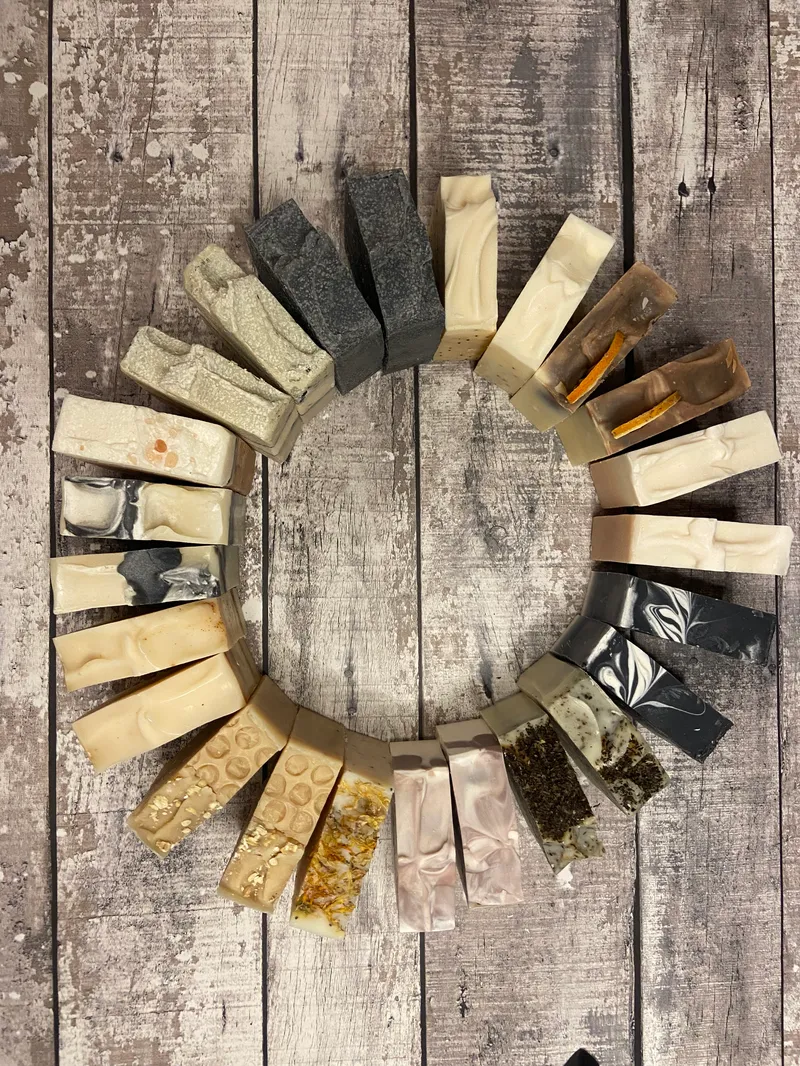Hi, I’m Bridget

I have always enjoyed being creative. I loved painting landscapes in watercolour before I had children. this is new
But as life and its priorities change, becoming a mum and working as a midwife, I found I didn’t have as much time for myself. Now my boys are growing up and becoming a little more independent, I decided to do a course in soap-making in West Wales.
I found this so enjoyable and really loved the process. Learning about the different properties of ingredients and how good it is for our skin to be nourished in this way.
One of my sons has had eczema since a baby, and I wanted to make him a soap to help his dry itchy skin. We had tried prescription creams, but nothing really made much of a difference. He loved that his Mummy was making him his own soap to use in his bath (this is my honey oatmeal goats milk soap non-scented). It has definitely helped, and we can see a big improvement in his skin.
How I make my soap

My base recipe includes olive oil, coconut oil, cocoa butter and shea butter. I colour my soaps naturally with clays and botanicals. I use essential oils to fragrance my soaps.
My soaps are vegan except for one - my goats milk, honey oat soap. My cold-pressed soaps are palm oil-free. I do have one product which is a whipped soap which does contain palm oil – I am finding it difficult to source a product to replace this ingredient.
My packaging is eco-friendly (no plastic). Cold pressed soap ingredients such as plant oils and essential oils are biodegradable. I try to reduce my carbon footprint by sourcing ingredients from local or sustainable farms.
I make my soap using the method known as ‘cold process’. It involves both art and science. This is the traditional method of making soap by combining fat or oil with sodium hydroxide. (lye). This treatment causes a chemical reaction called saponification, which takes up to 48hrs.
Cold process soaps are then cured for a minimum of 4 – 6 weeks to allow the water to evaporate. This makes the soap dry, become harder and milder and the lye non-existent in the finished product. The cold process method is ideal for preserving the benefits of plant derived butters and oils.
My method is to make soap in small batches. Firstly, I melt my oils and butter, then add to the lye solution. Then blend them together, to form an emulsion, kick-starting the saponification process.
I then add essential oils and clays/botanicals, finally pouring into a container (loaf mould) to cure. This is the hard bit, waiting usually 48hrs for soap to saponify, so I can cut it into slices safely and see what the soap looks like! I then cure my soaps on racks for a minimum of 6 weeks. They are then ready for sale.
All the products I sell have had an assessment called a CPSR (a cosmetic safety report). This assessment is required to sell in the UK legally.





